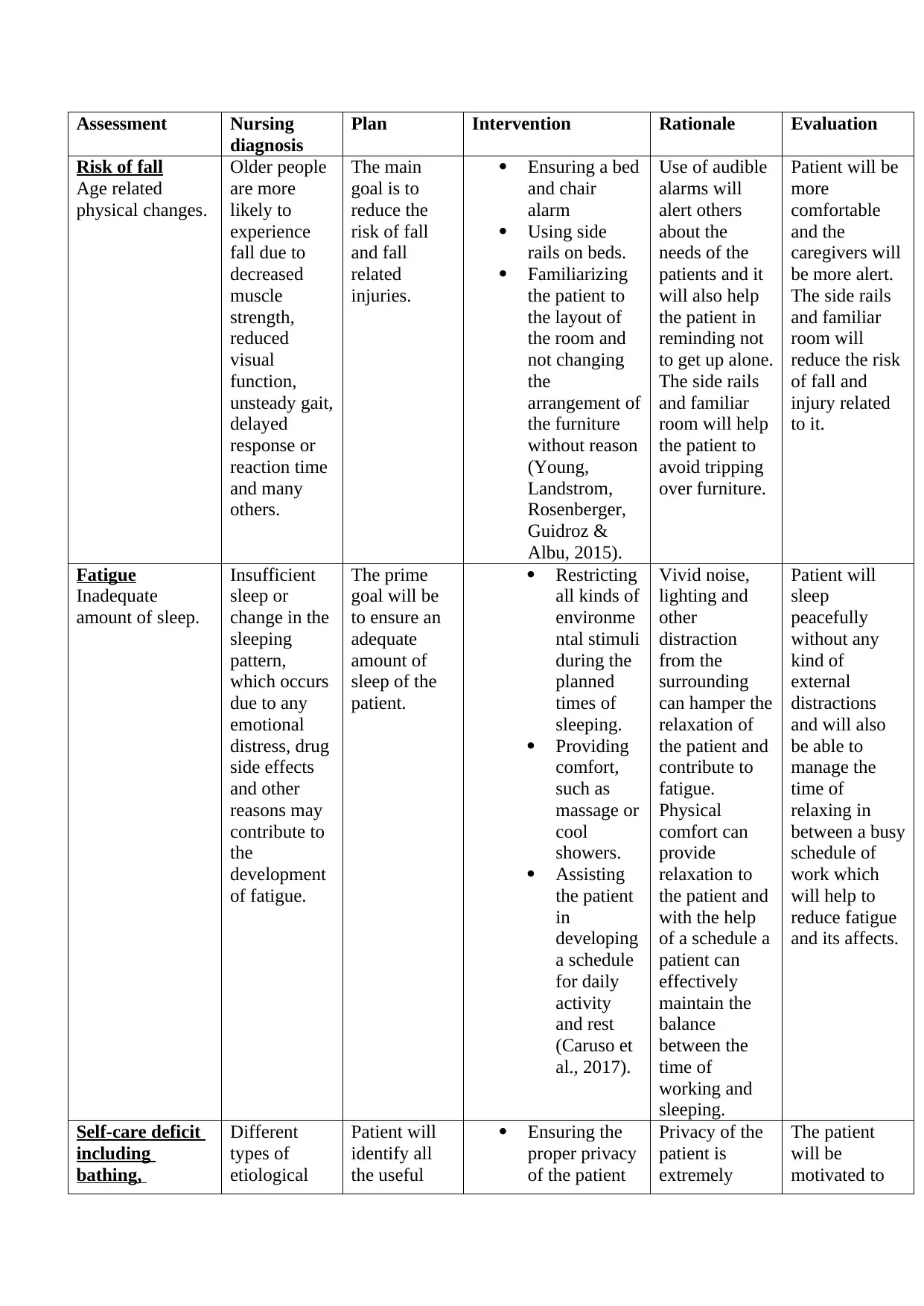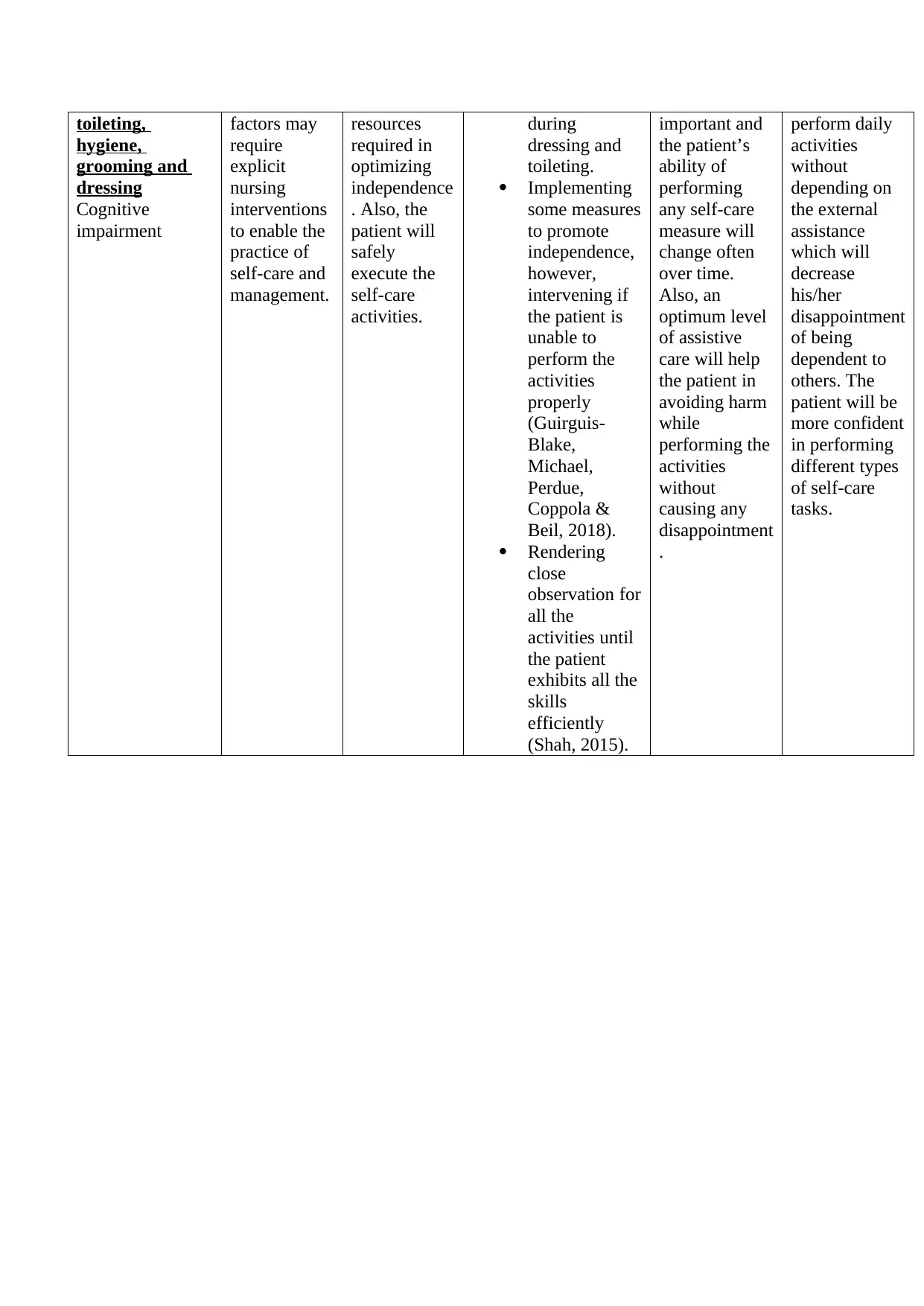Nursing Care Plan: Assessment, Diagnosis, Interventions, Evaluation
VerifiedAdded on 2022/11/15
|3
|817
|337
Practical Assignment
AI Summary
This assignment presents a comprehensive nursing care plan designed to address three key patient needs: risk of falls, fatigue, and self-care deficits encompassing bathing, toileting, hygiene, grooming, and dressing. The care plan meticulously outlines the assessment findings, relevant nursing diagnoses, and specific, measurable, achievable, relevant, and time-bound (SMART) goals for each identified issue. It further details a range of nursing interventions tailored to each diagnosis, along with the rationale behind each intervention, explaining how it contributes to achieving the set goals. The plan concludes with an evaluation component, which describes how the effectiveness of the interventions will be measured and assessed to ensure optimal patient outcomes. References support the evidence-based practice outlined in the plan.
1 out of 3








![[object Object]](/_next/static/media/star-bottom.7253800d.svg)